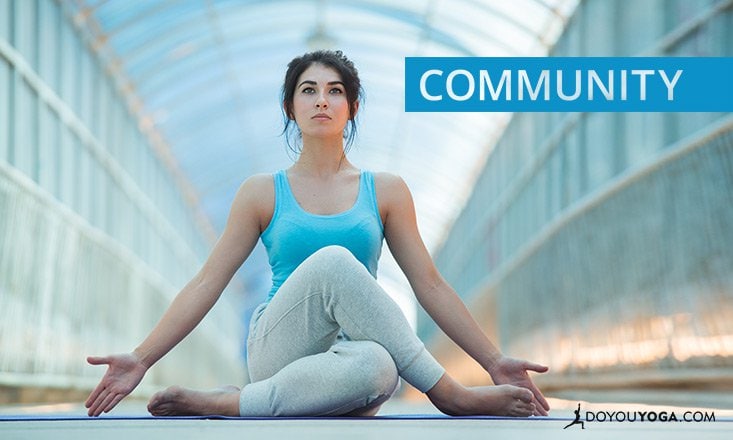
Exercises For IBS
Research has shown that moving your body can help relieve symptoms of irritable bowel disorder (IBS). You should avoid certain exercises if IBS is present.
Yoga poses to help with IBS
Yoga can be very beneficial for people with IBS. It is a form of yoga that focuses on breathing and relaxation. Regular yoga can reduce IBS symptoms like bloating and pain.
Each of the different types of Yoga can provide a variety benefits to your body. Side bends and turns stimulate the digestive system and increase blood circulation to the intestines. This exercise can help to relieve constipation. It increases the rate at which peristalsis occurs, or waves of movement that push stools downward.
Hatha is the most commonly practiced type of Yoga, and it consists mostly of different poses. Some are more restorative than others, but it is important to do a range of postures to get the full benefit.

Yin yoga is another good option for those suffering with IBS and offers more restorative postures that promote balance. These yoga postures can relax your mind, ease pain and reduce bloating.
Ashtanga or Bikram yoga are both forms of Yoga that can also be very helpful to IBS patients. These two forms of yoga, which use breath control and focus on movement to help with IBS, are both very gentle.
Diaphragmatic respiration is a popular method of breathing that can be used to treat IBS. It promotes calmness and relaxation. This breathing method can also reduce your stress levels. It may be useful if your IBS is causing you anxiety, as it will improve your ability.
Bow pose can be a very effective posture in yoga for IBS. By stimulating the abdominal muscles it increases their strength, which is helpful for relieving constipation. This posture also relieves tension in the shoulders, neck and head by lowering it to the floor.
Another yoga posture that can be used for IBS relief is the gate pose. This pose helps reduce symptoms of IBS such as gas, bloating, and diarrhea. This pose increases blood flow to the liver, gallbladders, pancreas, stomach and small intestine.

To perform the pose, kneel to the floor with your hands placed in front. As you bend forward from your knees, lift your feet and hips off the floor.
This pose can be done with or without support and is great for improving digestion and easing IBS. It is also helpful for those who experience dizziness and other nervous-system disorders such as insomnia or anxiety.
Listening to the body is the best way to determine what exercises work for you. Adjust your workouts as necessary. During flare ups you might want to engage in ultra-calming forms of exercise, while during periods of remission it may be best to engage in more intense activities. This will enable you to stay active while also allowing you to determine which exercises improve your IBS symptoms.
FAQ
What foods should I avoid after practicing yoga?
Your energy levels may be affected by avoiding certain foods. It can also make you feel bloated, or cause stomach cramps. It is possible to feel tired from practice and want to eat light, nutritious food.
How long does yoga take to work?
Yoga is a slow process, but you will always get a great workout. It takes time to build strength, flexibility, and endurance. It's best to begin slowly, and then gradually increase intensity until your goal level.
The key is consistency. The more you practice, the better it will be.
What are the requirements to practice yoga in a flexible way?
It depends on what kind of yoga you choose. Some yoga styles require you to be very flexible, while others focus on building muscle strength.
Also, different levels of flexibility are required depending on the style of yoga. Beginners might only need to extend their arms overhead. Intermediate practitioners might need to bend forward to touch their toes. Advanced practitioners might need to do deep twists or bends.
What are some of the benefits of yoga to beginners?
Yoga helps you to have better posture, flexibility, strength, breathing control, relaxation, and mental clarity. You will also be more aware and connected to the world around you, your fellow humans, and yourself.
Yoga teaches you how to live life fully. You learn to listen to your body and mind. Accept yourself for who you are. Learn to let go of tension and stress.
You learn to relax, enjoy and appreciate life.
Do yoga has side effects?
Yoga has risks like any other form of physical activity. Injury is the main danger. The main risk is injury.
Yoga can make you dizzy or faint if your first time doing it.
This is caused when blood pools in your brain. But don't worry; the sensation disappears quickly.
If you experience chest pains while doing downward-facing dogs, make sure you don't hold your breath. This will only increase heart rate and make things worse.
How will my clothes fit after I practice Yoga?
Most likely yes. Most yoga pants have elastic waists that stretch when worn. They should be comfortable enough for you to wear while working out without being restrictive.
Yoga pants may not fit well if your weight has dropped recently. If this is the case, consider wearing shorts or leggings instead.
Do I need special equipment?
Yoga doesn't require any special equipment. However, you may prefer using specific props such as blocks, straps, and blankets.
If you are interested in buying these items, please check out our Yoga Equipment Guide. We recommend that you choose products made from natural materials over plastic.
Statistics
- In comparison, a 125-pound person is estimated to burn 135 calories in 30 minutes of walking (at a pace of 15-minute miles) and 210 calories bicycling at a moderate pace on a stationary bike. (everydayhealth.com)
- A 2020 review of 27 studies (1,805 total participants) of yoga interventions in children or adolescents found reductions in anxiety or depression in 70 percent of the studies, with more promising results for anxiety. (nccih.nih.gov)
- Start your Fall off right with 20% off All Access Membership when you sign up by 9/25! (corepoweryoga.com)
- Gentle yoga has been shown to ease some of the discomforts of tender, swollen joints for people with arthritis, according to a Johns Hopkins review of 11 recent studies. (hopkinsmedicine.org)
- The people in the yoga group were 37 percent more likely to have quit smoking by the end of the 8-week program. (nccih.nih.gov)
External Links
How To
Is yoga a good workout?
Yoga isn’t only for those looking to lose weight. It also helps you develop flexibility, balance, coordination, strength, focus, and calmness.
Yoga isn't just a form of exercise. The poses are used as a way to relax and meditate. They improve posture, concentration, and respiration.
A "yogi" is someone who practices yoga. Yogis follow various forms of yoga, including Hatha, Ashtanga, Iyengar, Vinyasa, Bikram, Kundalini, Yin Yang, and Restorative.
There are many types and styles of yoga. But they all share similar goals. Each type focuses on different aspects of health and wellness. You can choose from meditation, pranayama or Hatha yoga.
There are some yoga movements that don't require equipment.
-
Sun Salutation – The series of 12 positions starts with forward bend followed by 10 poses.
-
Warrior pose - A warrior pose can be achieved by holding a stick/staff.
-
Triangle Pose – To achieve this pose, you need to raise one leg and then bend at the knee.
-
Standing Forward Bend - This pose is performed by sitting on the floor with legs straight and then folding forward at the waist.
-
Seated Twist - This pose is performed while seated on a chair or mat.
-
Cobra Pose – This is a pose where you lie flat on your back and raise your arms above your head.
-
Child's Pose - This pose is done while lying face up on the ground.
-
Cat/Cow Pose- This is a combination of a cat/cow pose. Your upper body should be lifted off the ground while you are lying down. Place your hands on your shoulders and roll over to the side.
-
Head Tilt - This pose is done by tilting your head back and keeping your eyes closed.
-
Shoulder stand - This position involves standing straight up with your arms and feet raised above the head.
-
Tree Pose – This pose involves kneeling on your heels with your hands beneath your shoulders.
-
Bow Pose – Bend forward from the hips to complete this pose. Then, place your palms on top of the ground and bend forward.
-
The corpse pose is held for five to ten minutes.
-
Mountain Pose - The mountain pose is where you stand tall while your spine is straight.
-
Legs Up the Wall Pose - This pose is executed by hanging upside-down from a wall.
-
Side Angle Pose- To achieve this pose, lean against a wall while putting your right elbow next to it.
-
Plank Position: This is when your legs are bent at the waist and your arms extend out to one side.
-
Bridge Pose: This pose can be achieved by balancing on your elbows or toes.
-
Reverse Table Top Poses - To achieve this pose, lie on your stomach while reaching your arms toward your ceiling.
-
Handstand - This requires strength and balance. You can hold your body between two walls or a frame of a door to perform this pose.
-
Half Moon Pose- Also known as Hero Pose. It is performed by standing on your hands and toes.
-
Handstand or Headstand - This pose requires balance and strength. You can do this pose on a wall (or using a doorframe).
-
Forearm Balance -- This pose involves your forearms resting on top of a tabletop.
-
Spinal twist - This is a pose where your belly lies while your arms reach your arms.
-
Supported Bound Angle Pose - This pose requires support and balance. For this pose, you will need to find something sturdy like a branch from a tree or an old beam to support you.
-
Wide Leg Forward - This position involves extending your legs and touching your toes.
-
Single Pigeon Pose – This pose is similar the the wide leg forward fold, but has only one limb extended.
-
Extended Puppy Dog Pose: This is a very relaxing pose. You can do this by extending your legs and bending your knees.
-
Standing Forward Bend - This is a pose where you are seated cross-legged, stretching your calves and hamstrings.
-
Crow Pose – This pose can be difficult but rewarding once you are able to master it. You do this by raising your arms high above your head and lowering them to the floor.